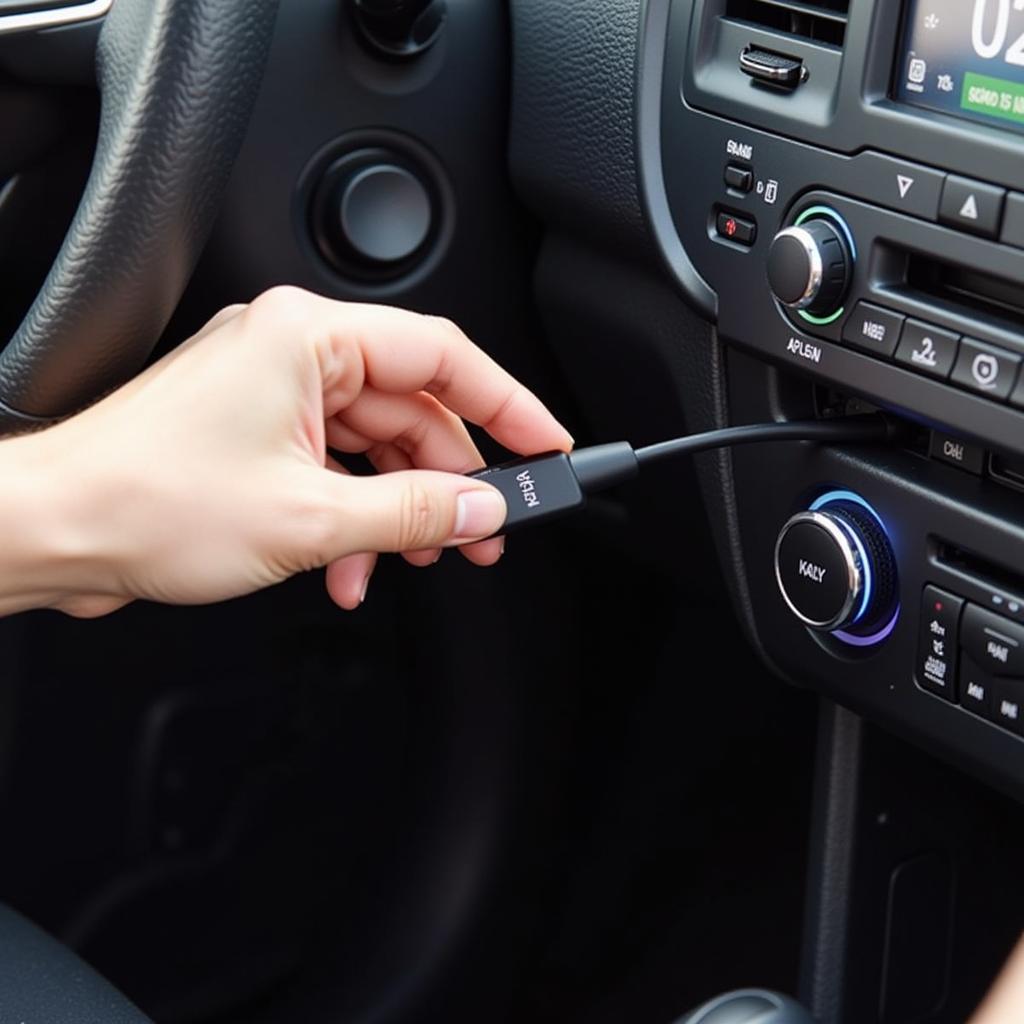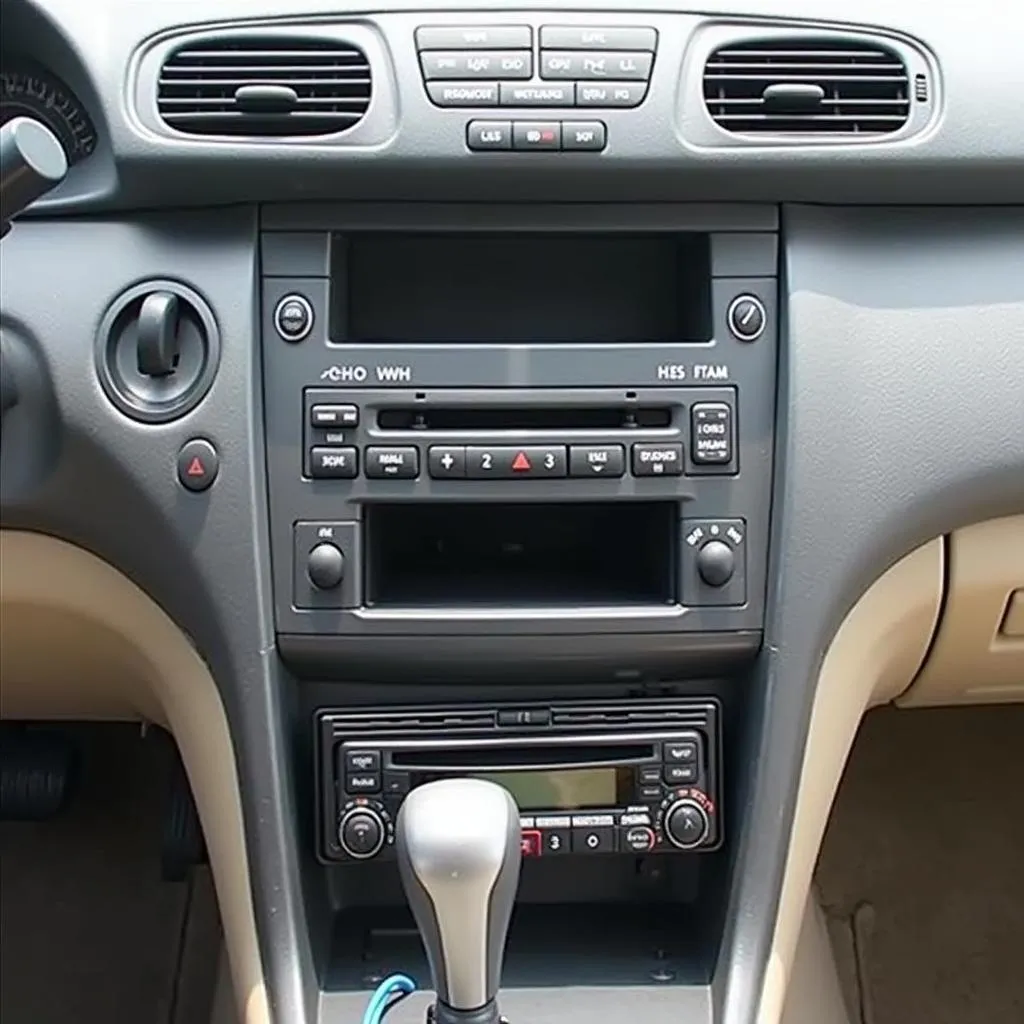The brake warning light on your Ford van’s dashboard is a crucial safety feature designed to alert you to potential issues with your braking system. Ignoring this light can lead to dangerous driving conditions and costly repairs. This comprehensive guide explores the common causes of a Ford van brake warning light and provides insightful solutions to help you get back on the road safely.
Understanding Your Ford Van’s Brake Warning System
Modern Ford vans are equipped with sophisticated brake warning systems that monitor various components, including:
- Brake fluid level: A sensor detects low brake fluid levels, which can indicate a leak or worn brake pads.
- Parking brake engagement: The warning light illuminates when the parking brake is engaged.
- ABS (Anti-lock Braking System): A separate warning light usually indicates ABS issues. However, in some cases, the brake warning light may also illuminate alongside the ABS light.
- Electronic Brakeforce Distribution (EBD): EBD optimizes braking force distribution, and a malfunction can trigger the brake warning light.
Common Causes of a Ford Van Brake Warning Light
1. Low Brake Fluid Level
One of the most common culprits behind a glowing brake warning light is low brake fluid.
Possible causes of low brake fluid:
- Worn brake pads: As your brake pads wear down, the brake calipers need more fluid to function correctly, leading to a lower fluid level in the reservoir.
- Brake fluid leak: Leaks can occur in the brake lines, hoses, calipers, or wheel cylinders, causing the brake fluid level to drop.
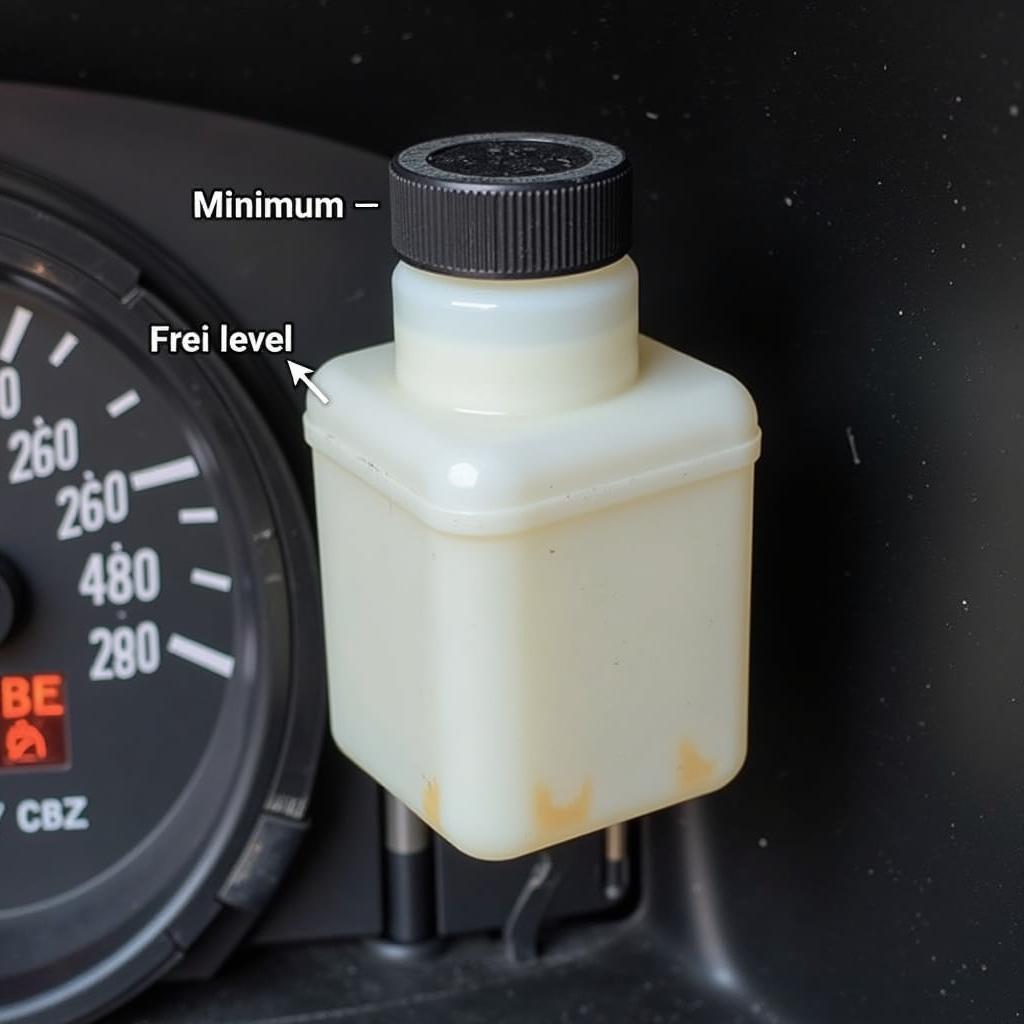 Ford Van Brake Fluid Reservoir
Ford Van Brake Fluid Reservoir
2. Worn Brake Pads
Brake pads are designed to wear down over time. When they reach a certain thickness, the brake warning light will turn on as a reminder to replace them.
Signs of worn brake pads:
- Squealing or screeching noises when braking
- Reduced braking performance
- Vibration or pulsation in the brake pedal
- Grinding noise when braking (indicates severely worn pads, potentially damaging the rotors)
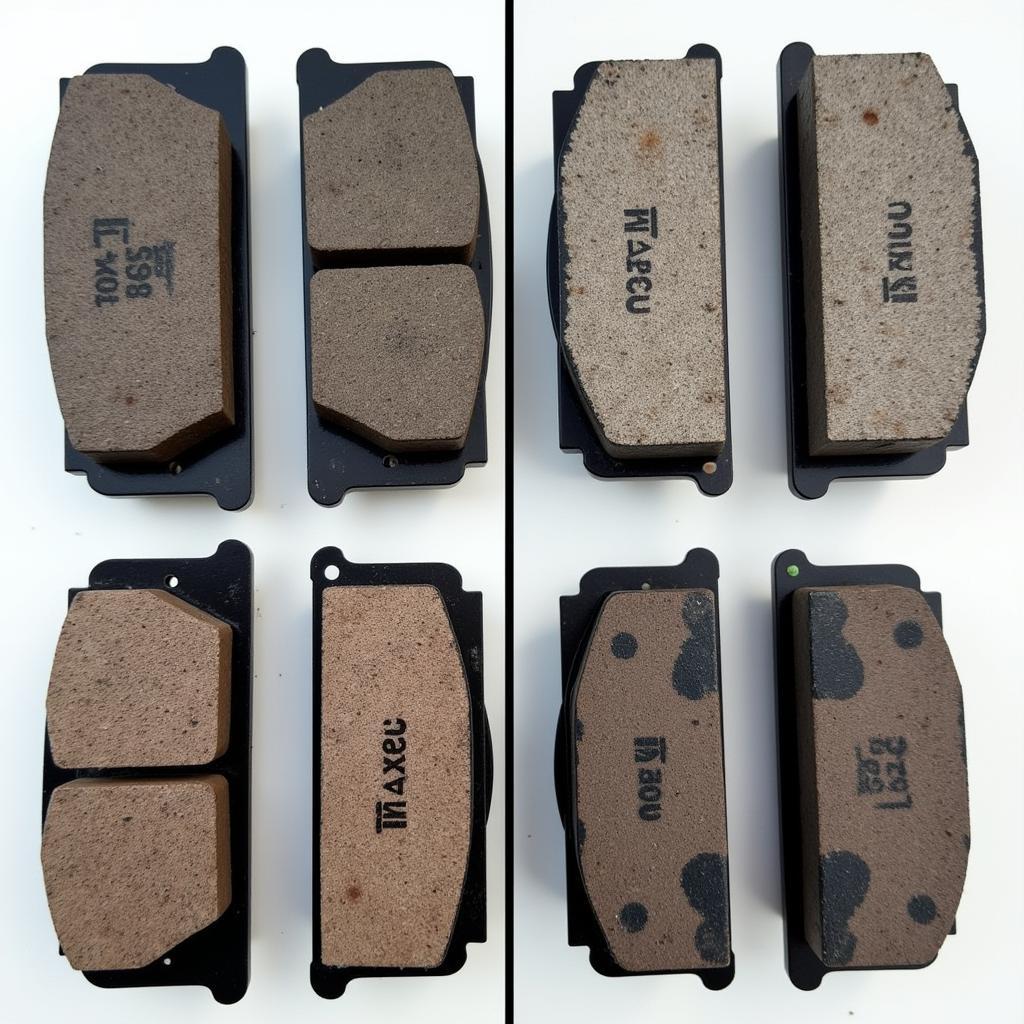 Worn Brake Pads on a Ford Van
Worn Brake Pads on a Ford Van
3. Faulty Brake Light Switch
The brake light switch is responsible for activating the brake lights when you press the brake pedal. A malfunctioning switch can not only prevent your brake lights from working but also trigger the brake warning light on the dashboard.
Signs of a faulty brake light switch:
- Brake lights don’t illuminate when the brake pedal is pressed
- Brake lights stay on even when the brake pedal is released
- Cruise control malfunctions or becomes inoperable
4. ABS System Malfunction
While a separate warning light typically indicates ABS issues, a malfunctioning ABS system can sometimes trigger the brake warning light as well.
Signs of ABS problems:
- ABS warning light illuminated
- ABS system engages unnecessarily, even on dry surfaces
- ABS system fails to engage when needed, especially on slippery surfaces
5. Electrical Issues
Electrical problems, such as a blown fuse, a short circuit, or a faulty sensor, can disrupt the brake warning system and cause the light to illuminate.
Troubleshooting a Ford Van Brake Warning Light
If your Ford van’s brake warning light comes on, it’s crucial to address the issue promptly. Here’s a step-by-step guide to help you troubleshoot the problem:
- Check the parking brake: Ensure the parking brake is fully released. It might seem obvious, but sometimes the simplest solution is overlooked.
- Inspect the brake fluid level: If the brake fluid level is low, add the recommended brake fluid type to the reservoir. If the level is significantly low or drops rapidly after adding fluid, there might be a leak in the system, requiring immediate professional attention.
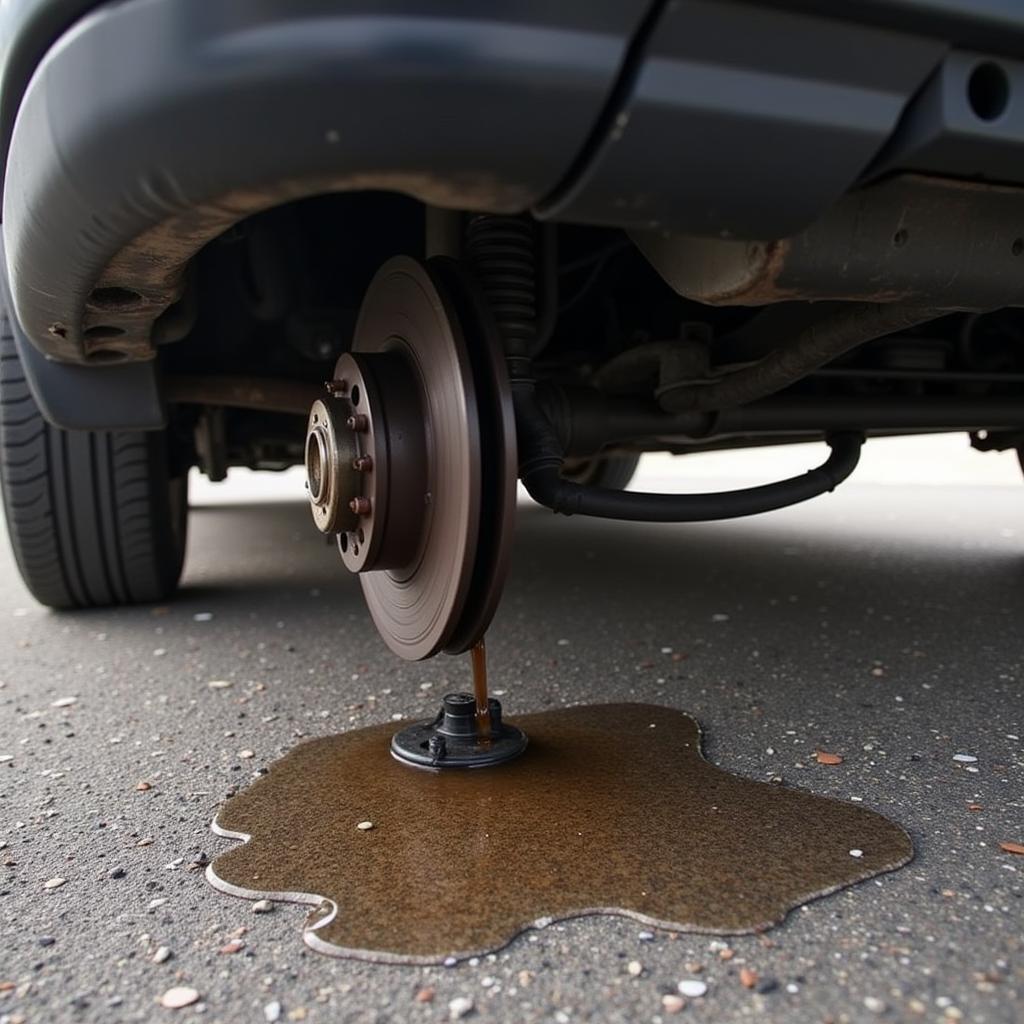 Ford Van Brake Fluid Leak
Ford Van Brake Fluid Leak
- Check for brake pad wear: If the brake pads are worn down, they need to be replaced. Consult your owner’s manual or a mechanic to determine the recommended brake pad replacement interval for your specific Ford van model.
- Inspect the brake light switch: If the brake light switch is faulty, it needs to be replaced.
- Consult a qualified mechanic: If you’ve checked the above components and the brake warning light persists, it’s essential to consult a qualified mechanic for a thorough diagnosis and repair.
Remote Diagnostic and Programming Solutions
In some cases, a qualified mechanic can remotely diagnose and even resolve certain brake system issues using advanced diagnostic software and programming tools. This can be particularly helpful for addressing software glitches or sensor problems.
“Remote diagnostics allowed us to quickly identify a faulty ABS sensor in a customer’s Ford Transit. We then programmed a new sensor remotely, saving the customer valuable time and hassle,” says John Smith, a certified Ford technician.
Preventative Maintenance for Your Ford Van’s Braking System
Regular maintenance can prevent many brake system issues and ensure optimal performance. Follow these preventive maintenance tips:
- Regular brake inspections: Inspect your brakes at least once a year or every 12,000 miles, or as recommended in your owner’s manual.
- Timely brake fluid flushes: Flush and replace your brake fluid every 24,000 miles or as recommended by Ford.
- Quality brake pads: Invest in high-quality brake pads that are compatible with your Ford van model.
Conclusion
The brake warning light in your Ford van is a critical safety feature that should never be ignored. Addressing the underlying issue promptly can prevent costly repairs and ensure your safety on the road. By understanding the common causes of a brake warning light and following the troubleshooting tips outlined in this guide, you can maintain a safe and reliable braking system for your Ford van.
Remember, if you’re ever unsure about any aspect of your vehicle’s braking system, don’t hesitate to consult a qualified mechanic for expert advice and assistance.
FAQs
1. Can I drive my Ford van with the brake warning light on?
It’s not advisable to drive your van with the brake warning light illuminated. It indicates a potential problem with your braking system, compromising your safety and potentially leading to further damage.
2. How much does it cost to fix a Ford van brake warning light issue?
The repair cost depends on the underlying cause. A simple brake fluid top-up or brake light switch replacement can be relatively inexpensive. However, more complex issues like brake line repairs or ABS module replacements can be significantly more costly.
3. How often should I check my Ford van’s brake fluid level?
It’s a good practice to check your brake fluid level at least once a month and before any long trips.
4. Can I add any type of brake fluid to my Ford van?
No, using the incorrect brake fluid type can damage your brake system. Consult your owner’s manual or a mechanic to determine the recommended brake fluid for your specific Ford van model.
5. Is it safe to replace my Ford van’s brake pads myself?
While brake pad replacement is possible for those with mechanical skills, it’s recommended to have it done by a qualified mechanic to ensure proper installation and bleeding of the braking system.

